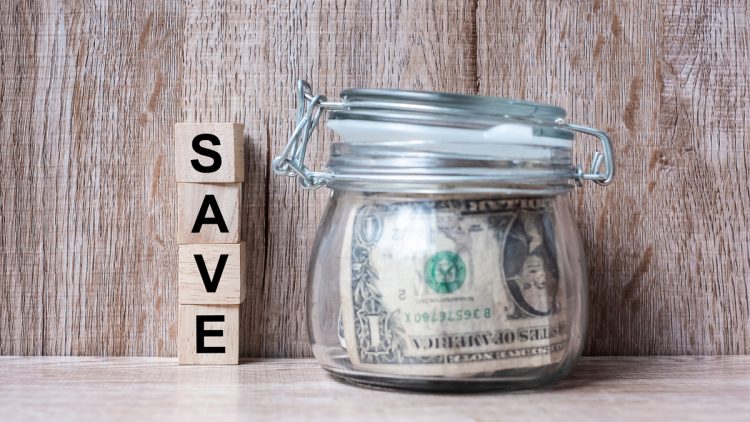If An Employer Does Not Offer A Retirement Plan, What Might Be Another Way To Save For Retirement?
Saving enough money for retirement without a 401k plan is possible! If you are searching for “how to save for retirement without a 401k“, this article will offer five tips on how to save enough for the future.
Saving Money Without A 401k
Take these five steps in order to save enough money for a happy and healthy retirement:
- Open An IRA
- Save Tax Returns
- Contribute To A CD
- Health Savings Account
- Open A Solo 401k
Open An IRA
For individuals without a 401k plan, opening an IRA tends to be the most popular alternative. The two most common IRA packages are the Roth IRA and traditional IRA plans. Both are great investment options for those looking to save for retirement. Anyone who wishes to open an IRA must be currently earning an income; this is basically the one and only requirement. However, if you are unemployed yet married to someone earning an income, you are eligible to open an IRA. This is a common plan chosen by self-employed workers.
Save Tax Returns
It may be difficult in the short term, but saving any and all tax returns will prove fruitful in the long term. Everyone’s gut instinct is to spend the return, but refrain from doing so if you plan to retire without a 401k. Saving tax returns is the simplest way to compile savings today. IRS Form 8888 allows taxpayers to deposit refunds into two or more savings accounts.
Contribute To A CD
Contributing to a CD (certificate of deposit) tends to be one of the safest investment options. It is so safe because the federal government insures CDs to never lose value. Another plus is that money can be withdrawn from a CD at any time desired. Being able to withdraw at any point is crucial for anyone encountering unexpected hospital bills, car payments or other bills.
Health Savings Account
Even if you have already contributed to a CD, opened an IRA and Solo 401k, you can still open a health savings account. The two biggest benefits of an HSA are the tax-free withdrawals and large potential for growth. The only downside is this money cannot be pulled without penalties until after age 65.
Open A Solo 401k
Just because you don’t have a traditional 401k, it doesn’t mean you can’t open an alternative savings plan. Also known as a self-employed 401k, a solo 401k is ideal for those not expecting to make a large yearly income. A solo 401k offers individuals the opportunity to contribute twice, once as an employee and once as an employer. Individuals can contribute their entirely yearly income as long as that figure does not exceed $19,500. The amount will differ when contributing as the employer, though. Employers may only contribute up to 25% of yearly earnings. Solo 401k contributors’ spouses are also eligible for this plan.
When Might Be The Best Time To Start Saving For Retirement?
The experts suggest you start saving for retirement as early as you can. Seems like this is easier said than done, though, right? Well, there are many ways for young people to save right now. Try to put away 10% of your monthly income as a start. If you put away 10% of your $5,000 earned each month, you will have saved a nice $6,000 for the year. Saving 10% each month will help protect you against any unexpected bills or dips in the stock market.
Americans believe they should have at least $1.7 million saved by age 65, according to a Charles Schwab study. In order to hit that mark, you must save $500 per month starting at age 25. It is a lofty goal, but deciding on retirement age and how much you’ll need to save will pay off in the future.
Here’s a look at typical age groups when Americans begin saving money for retirement. All data is courtesy of Morning Consult.
- Ages 20-29: 39%
- Ages 30-39: 25%
- Ages 40-49: 15%
- Ages 50-59: 6%
Canyon Winds Retirement Offers Assisted Living in Mesa, Arizona
Canyon Winds Retirement is an assisted living facility in Mesa, Arizona. To schedule a tour of our assisted living facility, contact SLS Communities or for more information please call us today at 480-780-1037.
More Articles About Senior Living
- Memory Care Facilities Near Me In Arizona
- Home Safety Checklist For Seniors
- Games For Seniors
- Assisted Living Facilities Near Me
- Retirement Party Ideas For Coworker
- Covid-19 Vaccine: What Seniors Need To Know
- Retiring In Arizona Pros And Cons
- 5 Crafts For Seniors With Dementia
- Top 5 Best Part Time Jobs For Seniors At Home
- How To Retire Early At 45 – Steps To Retirement
- How To Talk To A Parent With Dementia
- Assisted Living Vs Memory Care
- Assisted Living Pros and Cons | Advantages & Disadvantages
- How To Pay For Assisted Living With Medicare
- How Much Does Assisted Living Cost in Arizona?
- Retirement Wishes For A Boss
- How Much Does Assisted Living Cost In Mesa, Arizona?
- Independent Living Cost Arizona
- How Much Does Independent Living Cost?
- What is Memory Care?
- Benefits of Assisted Living
- Benefits of Independent Living
- Moving from Assisted Living to a Memory Care Facility
- Outdoor Activities For Seniors
- What Is Independent Living?
- What is Assisted Living?
- Retirement, Quotes, Sayings and Wishes
- How To Find A Retirement Community In Mesa, Arizona

